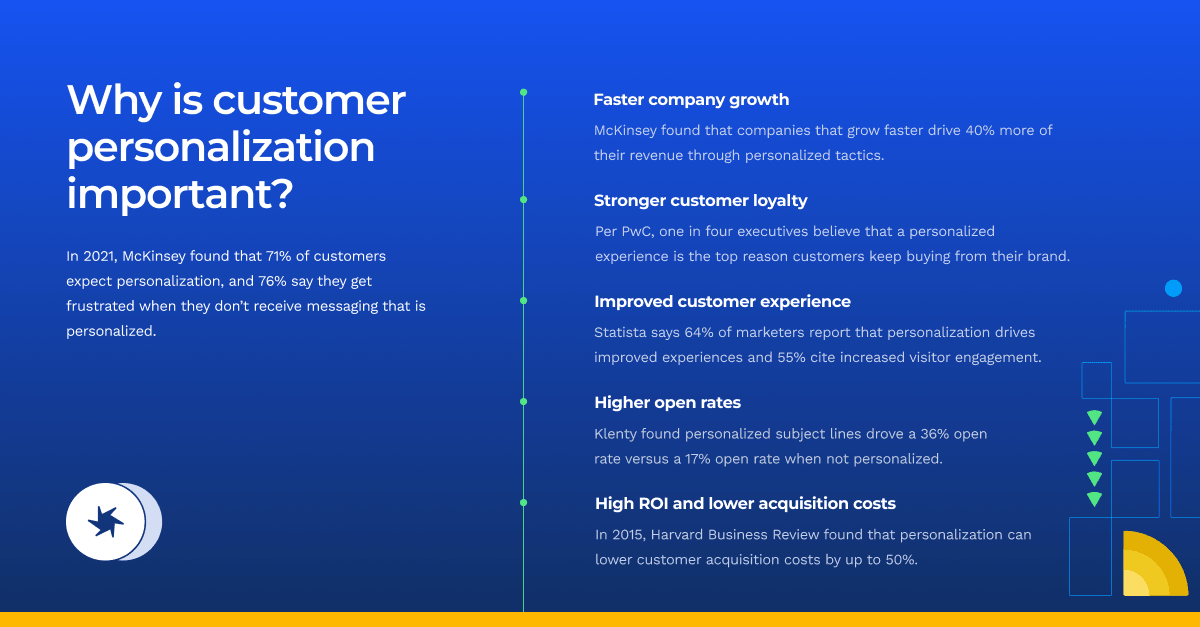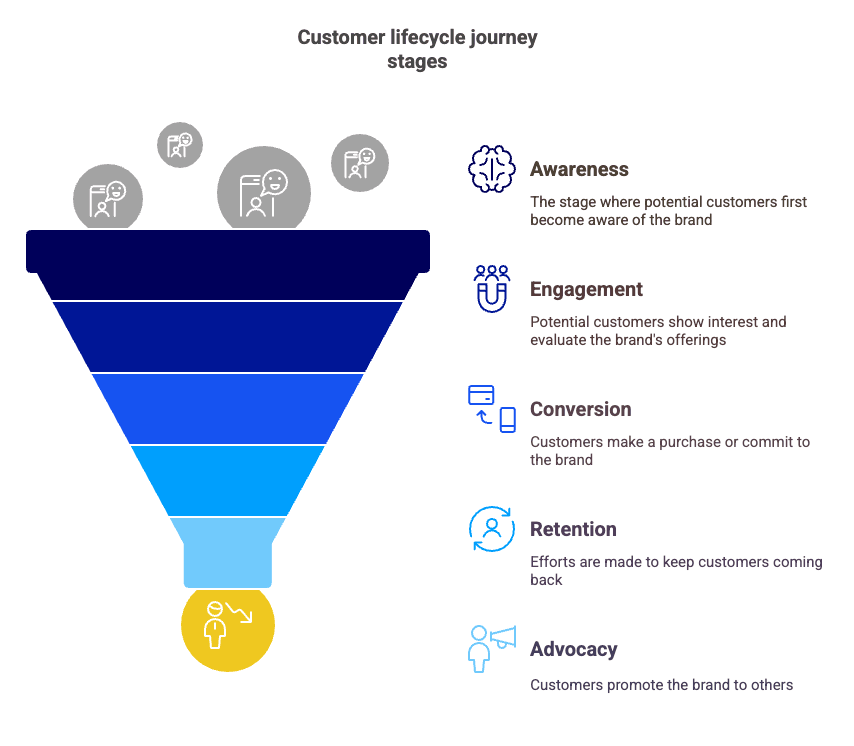Why is customer data activation important?
Every customer-facing function benefits from customer data activation because it allows them to understand who they’re helping. They can answer the right questions, solve relevant problems for their target audience, and provide personalized customer experiences.
When all teams have a single source of truth — rather than relying on fragmented data sources — they can all work to achieve the same goals for their audience. Each team is more effective, and the business grows as a result.
How marketers use customer data activation
Customer data guides informed marketing decisions through information collected straight from the source — also known as first-party data activation. Marketing activation relies on data like how customers learn about a brand, the content they consume along their journey, and when and how they convert.
For instance, customer data like email opens and clickthrough rates, engagement on a Facebook ad, and responses to SMS text marketing all give marketers valuable information about what messaging resonates with their customers and which offers are most appealing. From there, they can A/B test copy and messaging across each of these channels to optimize customer journeys, engagement, and conversions.
Data activation also gives marketers the tools to create more personalized marketing campaigns that resonate with an audience. They can guide audiences into appropriate journeys — resulting in improved conversion rates — and craft more helpful and relevant content, which drives customer loyalty.
How sales teams use customer data activation
Data activation helps busy sales teams use their time efficiently and drive customer acquisition. Rather than sending non-targeted or irrelevant outreaches, sales reps can use data to score leads and determine if and when someone is ready and interested in a conversation. Customer data activation offers real-time insights that help sales teams understand a lead’s needs and send helpful, valuable resources over time to nurture the relationship.
Reverse extract, load, and transform (ETL) tools, which sync customer data from warehouses like Snowflake to essential tools like Salesforce or Hubspot, send customer profiles and audience information straight to the tools that sales teams use daily. These insights guide outreach and prepare reps for discovery calls with highly relevant information that encourages prospects to buy.
How customer success teams use customer data activation
Customer success (CS) teams rely on customer data activation to better support customers with questions or problems about the user experience.
CS teams play a critical role in customer retention and churn reduction. When support tickets come in, customer data activation lets CS reps see a customer’s health score or support history at a glance. That data helps CS reps prioritize the tickets of at-risk customers first to limit the fallout of any bugs or issues in the product. The faster they can solve problems (especially without customers having to repeat themselves or explain their use of the product), the more likely customers will continue to use the product.
Even before tickets come in, CS can use customer data activation to understand churn risk signals and create alerts when someone has a problem or has stopped logging into the product. Then, they can reach out personally to answer questions or help them get more value from the product.


